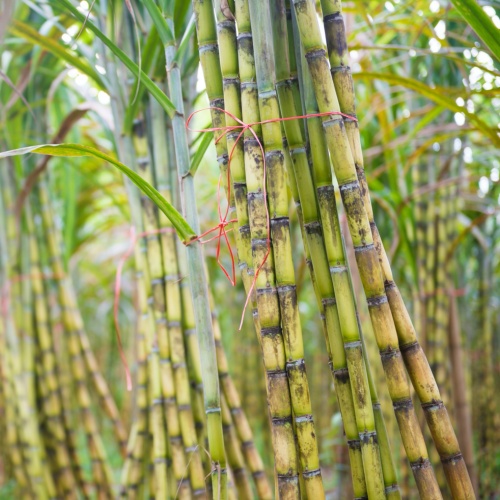The Trip of Cane Sugar Processing: From Harvest to Crystals
The Trip of Cane Sugar Processing: From Harvest to Crystals
Blog Article
A Comprehensive Overview to the Ecological Impact and Sustainability Practices in Walking Cane Sugar Processing
The ecological effect of cane sugar processing presents an intricate variety of challenges that warrant mindful assessment. From soil destruction and extreme water usage to the carbon impact linked with growing and production, the effects of standard practices are far-ranging. What particular techniques can be carried out to strike a balance in between efficiency and environmental stewardship?
Introduction of Cane Sugar Handling
Cane sugar handling involves a collection of systematic actions that change sugarcane right into refined sugar. Originally, harvested sugarcane is transported to refining centers, where it goes through cleansing to remove dirt and particles. Following this, the cane is squashed to remove juice, which is then made clear by removing pollutants via heating and the enhancement of lime.
The cleared up juice undertakes evaporation, where water is removed to concentrate the sugar material. These crystals are divided from the continuing to be syrup making use of centrifugation, resulting in raw sugar.
The end product is then dried and packaged for circulation. Throughout this whole procedure, maintaining efficiency and quality assurance is necessary to ensure the sugar meets industry requirements. Each action in walking cane sugar handling not just adds to the end product however likewise has ramifications for source use and waste generation, establishing the phase for conversations on sustainability and environmental effects connected with sugar production.
Environmental Challenges of Manufacturing
The manufacturing of walking cane sugar offers several substantial ecological obstacles that warrant interest. One main issue is the comprehensive use of agrochemicals, including chemicals and plant foods, which can result in soil degradation, biodiversity loss, and contamination of neighborhood water resources. The overflow from sugarcane fields often lugs these chemicals right into close-by environments, interrupting aquatic life and influencing the health and wellness of neighborhoods reliant on these water bodies.
Another obstacle is the high power consumption related to sugarcane handling. The boiling and refining stages require significant warm, primarily produced by burning fossil gas, adding to greenhouse gas emissions. In addition, the large acreage required for sugarcane cultivation can cause deforestation and habitat destruction, more intensifying climate adjustment and harmful wildlife.
In addition, the labor practices in some areas raise ethical problems, as employees may face bad working conditions and insufficient wages. This circumstance typically perpetuates a cycle of destitution in regional communities. Cane Sugar Processing. Attending to these environmental difficulties is crucial for establishing extra lasting methods in walking cane sugar production, eventually profiting both the environment and the communities entailed in this industry
Water and Land Use Effect
Water resources and land application are crucial elements in the walking cane sugar industry that substantially influence the environment. The cultivation of sugarcane needs significant water input, with price quotes suggesting that it can eat approximately 2,000 liters of water per kilogram of sugar created. This extensive use water often results in exhaustion of neighborhood water resources, influencing not just the sugarcane haciendas but also surrounding environments and areas that count on the exact same water sources for farming and residential use.

In addition, land use for sugarcane farming can bring about logging and the conversion of all-natural habitats right into monoculture plantations. This method lessens biodiversity, disrupts regional ecological communities, and contributes to dirt destruction. The growth of sugarcane areas usually trespasses on important agricultural land, producing competition for sources in between food and biofuel manufacturing.
Sustainable techniques, such as optimizing watering techniques and carrying out plant rotation, are crucial to reduce these effects. By taking original site on more effective water usage and land monitoring strategies, the cane sugar market can minimize its eco-friendly impact, ensuring a balance between farming performance and ecological conservation.
Greenhouse Gas Emissions
Greenhouse gas exhausts stand for a significant environmental issue within the walking stick sugar processing market, specifically as farming techniques broaden to satisfy international need. The farming of sugarcane, a plant that prospers in exotic environments, depends heavily on synthetic fertilizers and pesticides, which add to nitrous oxide emissions. In addition, land-use adjustments, consisting of logging for brand-new sugarcane vineyards, release carbon dioxide stored in vegetation and dirt.
Throughout processing, energy intake is one more major resource of greenhouse gas discharges - Cane Sugar Processing. Lots of sugar mills utilize fossil gas to power equipment and produce warmth, leading to significant carbon impacts. Moreover, the transportation of raw sugarcane and ended up products includes layers of emissions through gas combustion in lorries
The collective effect of these exhausts intensifies environment modification, posing threats not only to the setting but likewise to the long-term stability of the market. Stakeholders must acknowledge the immediate requirement for thorough techniques that resolve these discharges. This entails assessing existing agricultural practices, processing methods, and transportation systems to determine locations for enhancement and mitigation. Attending to greenhouse gas exhausts is important for cultivating a more sustainable cane sugar market in a transforming climate.

Lasting Practices and Innovations
Sustainable techniques and developments are increasingly essential in the walking stick sugar processing sector as stakeholders seek to lower environmental influences while preserving performance. One considerable advancement is the application of incorporated crop monitoring, which enhances source use by integrating soil administration, parasite control, and crop turning techniques. This technique enhances yield while decreasing chemical inputs and protecting dirt health.
Additionally, the fostering of renewable resource resources, such as biomass from sugarcane residues, has actually obtained traction - Cane Sugar Processing. By converting waste items into energy, refining view publisher site centers can reduce their reliance on nonrenewable fuel sources, thereby reducing greenhouse gas discharges
Water monitoring practices have likewise seen renovations through the recycling and reusing of water in processing plants, substantially lowering freshwater consumption. Developments in innovation, such as accuracy farming, enable farmers to monitor crop health and wellness and resource use extra effectively, guaranteeing sustainable growing methods.
Moreover, qualification programs like Fair Profession and Rain forest Partnership urge eco liable farming techniques and advertise social equity within the supply chain. By welcoming these lasting techniques and innovations, the cane sugar handling sector can boost its strength and add favorably to environmental stewardship.
Final Thought
The environmental impact of cane sugar processing offers substantial difficulties, consisting of soil degradation, high water consumption, and greenhouse gas emissions, alongside moral problems associated with labor methods. Dealing with these issues through lasting methods, such as integrated crop management, renewable resource fostering, and water recycling, is vital. By promoting environmentally liable and socially fair techniques in sugar production, the sector can alleviate its negative effects, making certain a much more sustainable future for both ecosystems and areas entailed in this market.
Cane sugar handling involves a collection of methodical actions that transform sugarcane right into refined sugar. Each action in walking stick sugar processing not just contributes to the last item however also has ramifications for resource usage and waste generation, establishing the phase for conversations on sustainability and environmental influences connected with sugar manufacturing.
Greenhouse gas discharges stand for a considerable ecological worry within the cane sugar processing sector, particularly as farming practices broaden to fulfill global need.Lasting practices and technologies are increasingly crucial in the walking cane sugar processing market as stakeholders look for to reduce environmental influences while maintaining efficiency.The ecological influence of cane sugar processing offers significant challenges, including dirt destruction, high water intake, and greenhouse gas exhausts, More about the author alongside ethical worries connected to labor practices.
Report this page